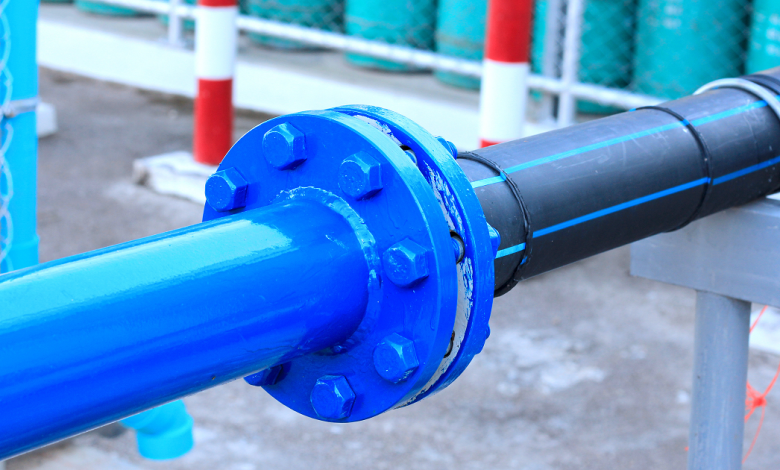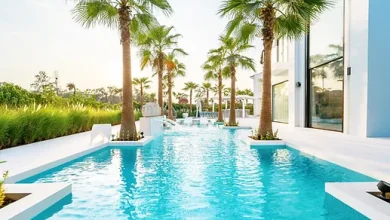Outdoor Pipe Materials: Choosing What’s Best for Your Climate

Outdoor pipes are indeed essential for any residential or commercial property, and choosing the right materials is crucial for their longevity and performance, especially considering the diverse climate conditions they may face. Whether you’re in a humid tropical region, a desert, or a cold, snowy climate, selecting the appropriate pipe material is vital to ensure the efficiency and durability of your plumbing system. This comprehensive guide, tailored for plumbers in Katy and property owners alike, will delve into the various outdoor pipe materials available and provide insights based on specific climate conditions. From the freezing temperatures of the Arctic to the scorching heat of the desert, we will discuss which materials are best suited for different environments, ensuring that your outdoor pipes stand the test of time.
PVC (Polyvinyl Chloride) Pipes
Thanks to their versatility and affordability, PVC pipes are a popular choice for outdoor plumbing. They are resistant to corrosion, which makes them suitable for various climates. However, their performance varies depending on the temperature.
- In Warm Climates: PVC pipes perform exceptionally well in regions with warm climates. They resist UV rays and can withstand high temperatures without warping or deteriorating. These pipes are also known for their low maintenance requirements, making them an excellent choice for areas with scorching summers.
- In Cold Climates: PVC pipes are generally durable but can become brittle in extremely cold temperatures. In regions with frequent freezing, the expansion and contraction of water inside the pipes can lead to cracks or fractures. To mitigate this risk, insulating PVC pipes properly and ensuring they are buried below the frost line is essential.
CPVC (Chlorinated Polyvinyl Chloride) Pipes
CPVC pipes are various PVC pipes designed to withstand higher temperatures and offer improved chemical resistance. They are a suitable choice for outdoor plumbing in certain climate conditions.
- In Warm Climates: CPVC pipes excel in warm climates like PVC pipes. Their enhanced resistance to heat and chemicals makes them a reliable option for areas with consistently high temperatures. These pipes are also less likely to corrode, ensuring long-term durability.
- In Cold Climates: Similar to PVC pipes, CPVC pipes may become brittle in extremely cold conditions. However, they have better cold-weather performance than standard PVC pipes. If you live in a cold climate, insulating CPVC pipes and protecting them from freezing temperatures is crucial.
PEX (Cross-linked Polyethylene) Pipes
PEX pipes have gained popularity in recent years due to their flexibility, durability, and resistance to freezing. They are an excellent choice for outdoor plumbing, especially in regions with extreme temperature variations.
- In Warm Climates: PEX pipes perform well in warm climates, thanks to their resistance to UV rays and high-temperature tolerance. They are less likely to develop leaks or cracks, making them a reliable option for areas with hot summers.
- In Cold Climates: One of the significant advantages of PEX pipes is their resistance to freezing. They can expand and contract without cracking, making them an ideal choice for cold climates. However, it’s essential to use PEX pipes specifically designed for outdoor use and follow proper installation guidelines to ensure they remain freeze-resistant.
Copper Pipes
Copper pipes have been a traditional choice for outdoor plumbing for decades. They are known for their durability and resistance to corrosion. However, their suitability depends on the climate and the specific application.
- In Warm Climates: Copper pipes are a solid choice for outdoor plumbing in warm climates. They are highly corrosion-resistant, which is essential in regions with high humidity. Copper pipes can also handle high temperatures without compromising their integrity.
- In Cold Climates: While copper pipes are generally reliable, there are better choices for extremely cold climates. They can become brittle in freezing temperatures, potentially leading to cracks or leaks. If you opt for copper pipes in a cold climate, proper insulation and protection from freezing are crucial.
Galvanized Steel Pipes
Galvanized steel pipes are known for their strength and durability. They are coated with zinc to protect against corrosion, making them suitable for certain outdoor applications.
- In Warm Climates: Galvanized steel pipes can work well in warm climates, but their durability may be compromised over time due to exposure to moisture and humidity. The zinc coating can deteriorate in humid conditions, leading to rust and corrosion.
- In Cold Climates: Galvanized steel pipes are prone to rust and corrosion in cold and wet climates. The combination of moisture and low temperatures can accelerate the deterioration of the zinc coating, ultimately leading to leaks and reduced pipe lifespan. Therefore, there are better choices for cold and rainy regions.
HDPE (High-Density Polyethylene) Pipes:
HDPE pipes are known for their resilience and versatility. Thanks to their resistance to corrosion and temperature variations, they are used in various applications, including outdoor plumbing.
- In Warm Climates: HDPE pipes perform admirably in warm climates. They resist UV rays and can handle high temperatures without warping or deteriorating. These pipes are also lightweight and easy to install, making them popular for outdoor projects.
- In Cold Climates: HDPE pipes are highly freezing-resistant, making them an excellent choice for cold climates. They can expand and contract without cracking, ensuring reliable performance even in sub-zero temperatures. However, proper installation and protection from physical damage are essential in all climates.
Cast Iron Pipes
Cast iron pipes have been used for centuries and are known for their strength and durability. While they are less commonly used for outdoor plumbing today, they can still be a viable option in certain situations.
- In Warm Climates: Cast iron pipes can work well in warm climates, where corrosion is less of a concern. Their robust construction makes them suitable for carrying wastewater and sewage in outdoor applications. However, they can be susceptible to rust over time.
- In Cold Climates: Cast iron pipes can be prone to freezing and cracking in frigid climates. Their weight and rigid nature make them less flexible than other materials. This leads to burst pipe Katy issues in freezing conditions. Proper insulation and maintenance are essential if you choose cast iron pipes in a cold climate.
Conclusion
Selecting the right outdoor pipe material is essential to ensure the longevity and performance of your plumbing system, and it largely depends on your climate conditions. PVC and CPVC pipes suit warm climates, while PEX pipes excel in warm and cold regions. Copper pipes are reliable in warm climates but may require extra care in the cold. Galvanized steel pipes should be avoided in humid and cold climates due to their susceptibility to corrosion. HDPE pipes are versatile and perform well in various climates, while cast iron pipes can work in specific situations but require careful maintenance.
Before making your decision, consider the unique climate conditions of your area, your specific plumbing needs, and your budget. Consulting with a professional plumber is always a good idea to ensure you choose the best outdoor pipe material for your climate and application. By making an informed choice, you can enjoy a reliable and long-lasting outdoor plumbing system that withstands the challenges of your environment.



